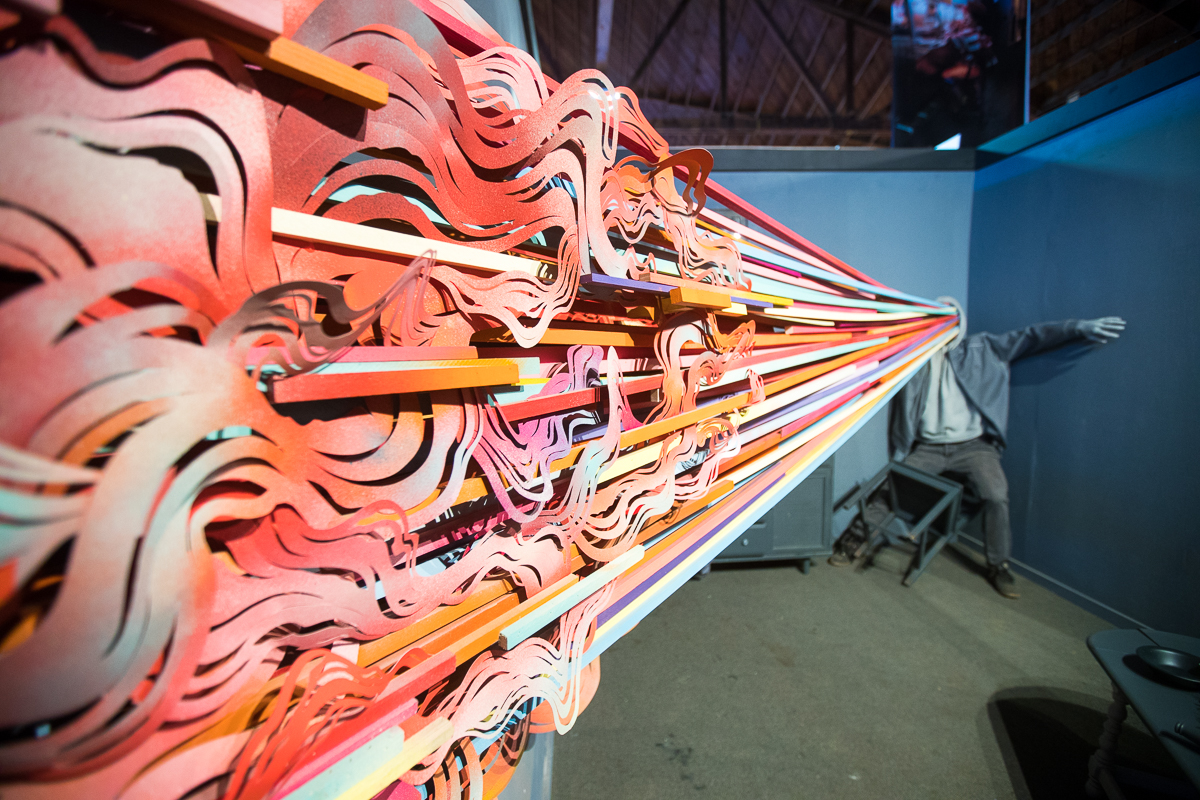 Photo by Nicholas Wray
Photo by Nicholas Wray
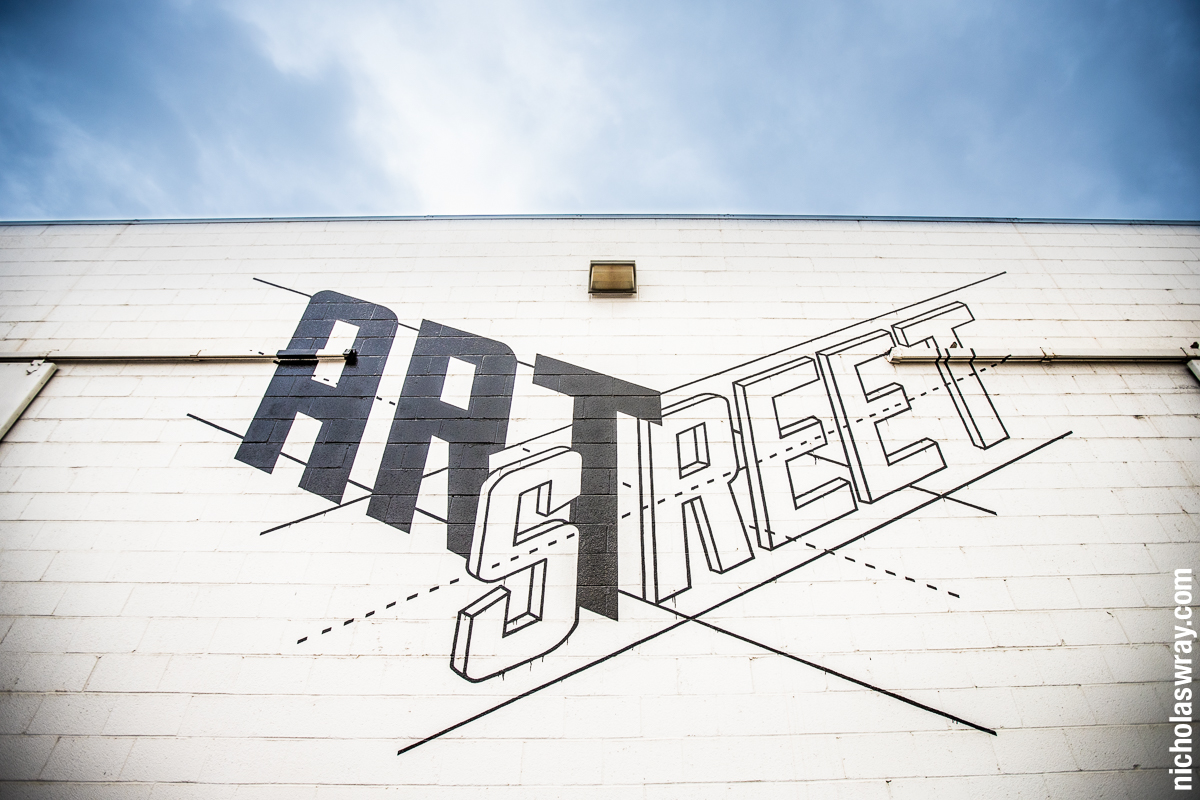
I felt like a child again.
In wonderment, in awe, jaw agape, I excitedly weaved all over ArtStreet, unable to believe my eyes. Or any of my senses. The overwhelming magnitude of this project is made even more special by its impermanence. Its world-class contribution to arts and culture is trumped only by the pride-inducing fact that our neighbors made this happen, right in our own backyard.
Organized by M5 Arts, a collaborative holacracy that was responsible for last year’s tremendously successful and acclaimed Art Hotel, gathered more than 100 artists together in a 65,000 square-foot warehouse to create an arts experience that dazzles. Beyond visual art, daily events include live music, poetry, dance, history lectures and more. Made possible by the contributions of the city and a number of businesses and individual patrons, ArtStreet opened its doors on Feb. 3, and will say its goodbyes on Feb. 25. Your inner child will thank you for visiting.
While actual children were taking it in on my many visits, there are some exhibits that warn prior to entry that they are not kid-friendly, and in fact, may trigger victims of abuse and rape. Art should make you feel, and tears streamed down my face as I read the stories of rape and molestation victims, juxtaposed with their anonymous nude photos in one exhibit. In another, entitled This is What It Feels Like, you enter through a curtain into a dark room. Violent sounds of breaking glass fill the room as you fumble in the dark for headphones hanging on the wall. Listening to men catcall and say things like, “Suck it, babe,” and “Smile,” is meant to invoke the fear, anger and degradation that too-often accompanies girlhood and womanhood.
We spoke to some of the artists who participated in the creation of ArtStreet to get some insight about their work. Here are explanations of their contributions, in their own words.
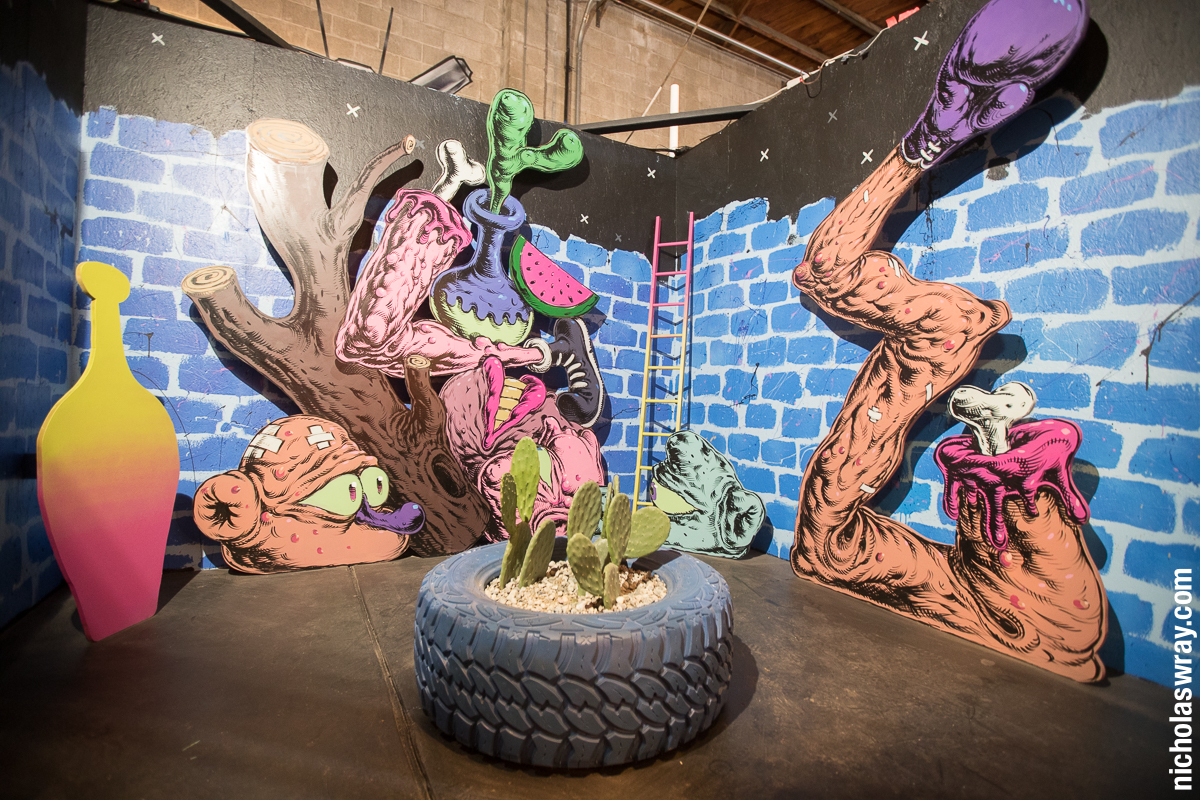
Photo by Nicholas Wray
Jared Tharp
“When I make art, I like to remain somewhat vague with my narrative. Even as I go, I prefer to let it all unfold during the process. I guess the reason behind working in this way is so that I can also step back as a viewer and attempt to decipher what I’ve done. For this project I felt that there were a few ideas woven together. However, I had a lot of fun playing with the idea that human beings and other objects in nature are essentially made up of the same stuff. In a painting, a tree can be an arm. A head can be a rock. For me, these are fun things to think about. I cut large shapes out of wood and mounted them to the walls, then I painted on them. The centerpiece was a tire that I found in front of my neighbor’s house. I was drawn to it, so I scooped it up and turned it into a planter for some cacti. The whole thing took me about a month to complete. In the process, I think we all grew closer as a Sacramento art fam, too. It was grueling work, but it definitely paid off.”
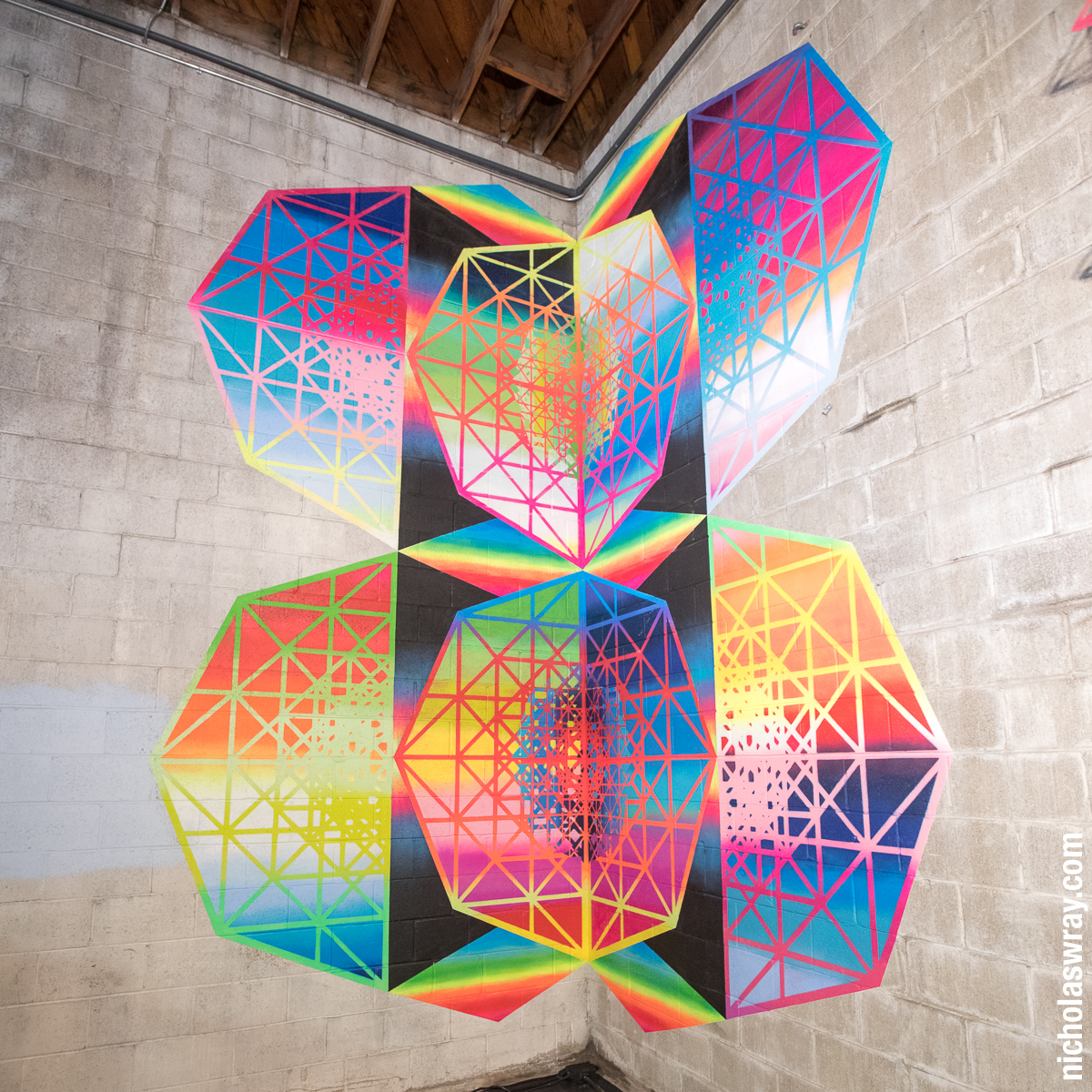
Photo by Nicholas Wray
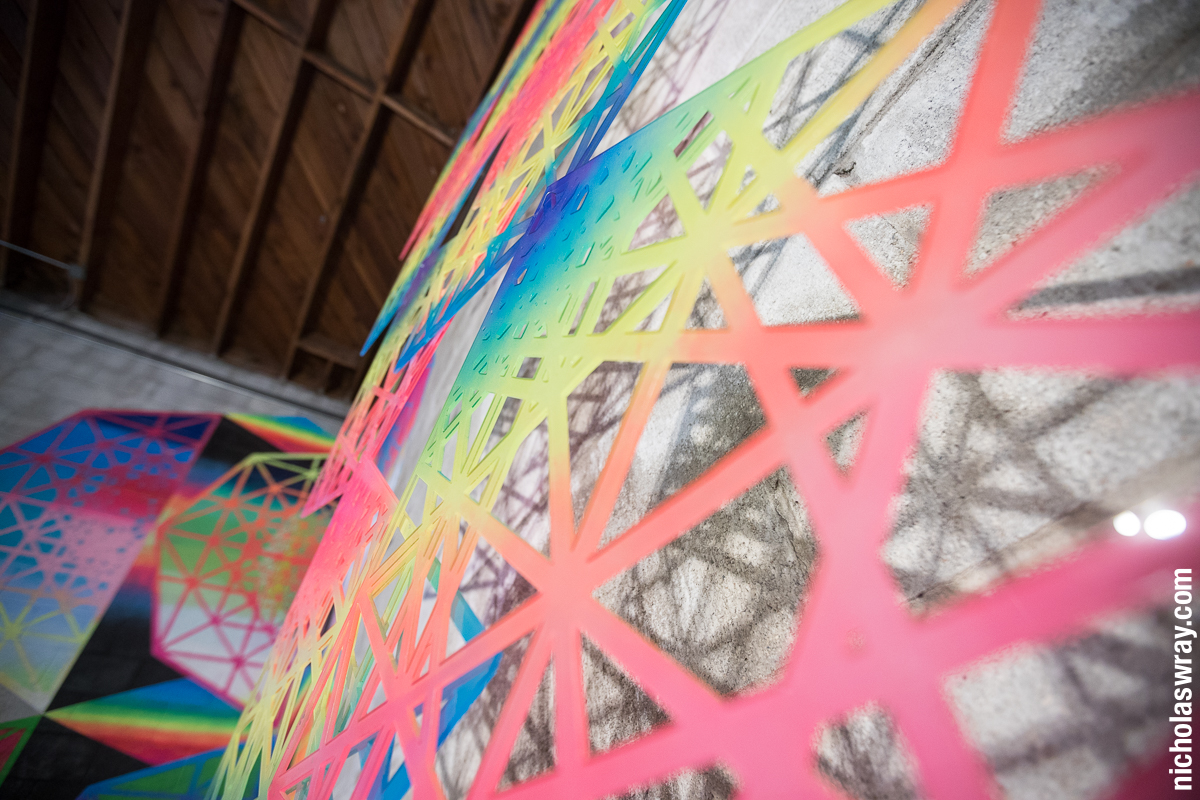
Photo by Nicholas Wray
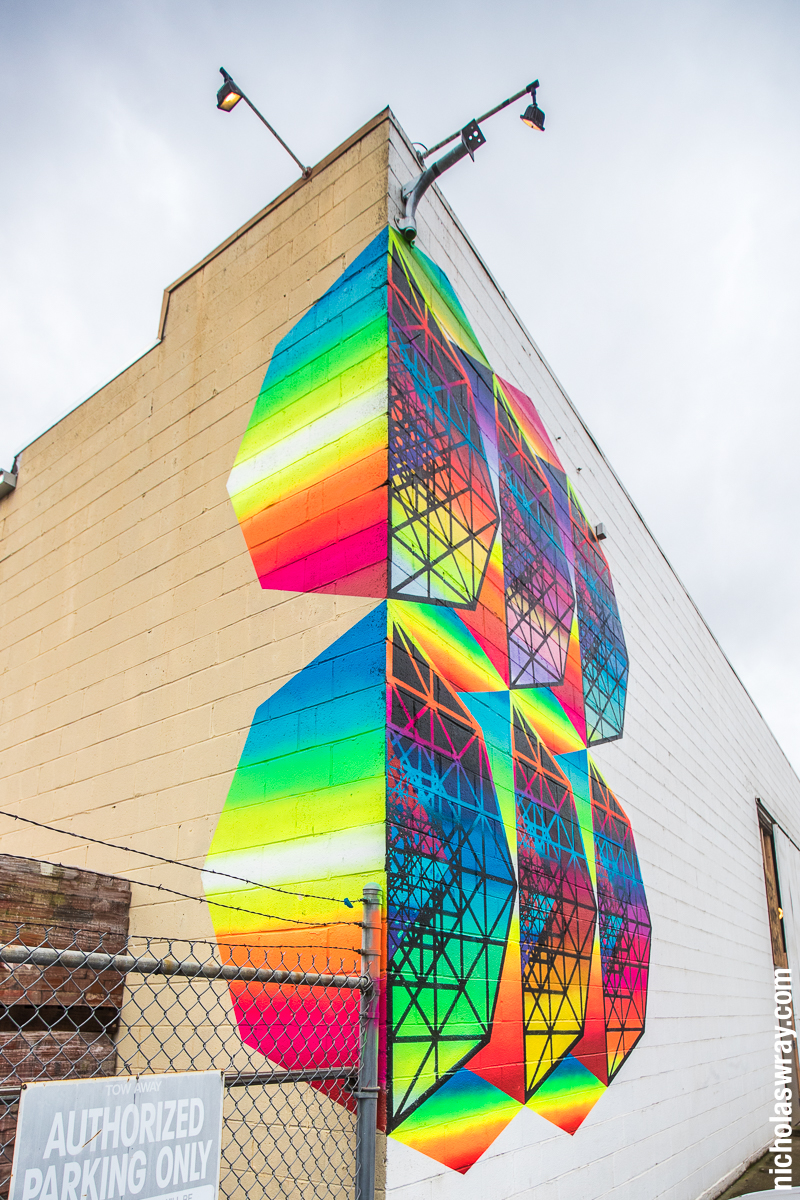
Photo by Nicholas Wray
Jose di Gregorio
“The initial idea behind my work was for the exterior and interior mural to be identical, so that it was a window or portal of sorts. The layout shifted a little and ultimately, I felt that having the work in the same Northeast corner without necessarily being mirrored would be perhaps more effective. The exterior wall might just be a peripheral piece as you walk in, but the familiarity of the design on the inside wall would have the viewer reconsider what they saw outside. The laser-cut pieces are of the same pattern aesthetic, but in 3-D form. Working with M5 is like working with any of my other weirdo peers. I love it. We all thrive on the pressure to create some sort of alchemy magic with whatever resources we have. I want weirdos to be a larger fabric of all society. Especially now. You all need us more than we need you.”
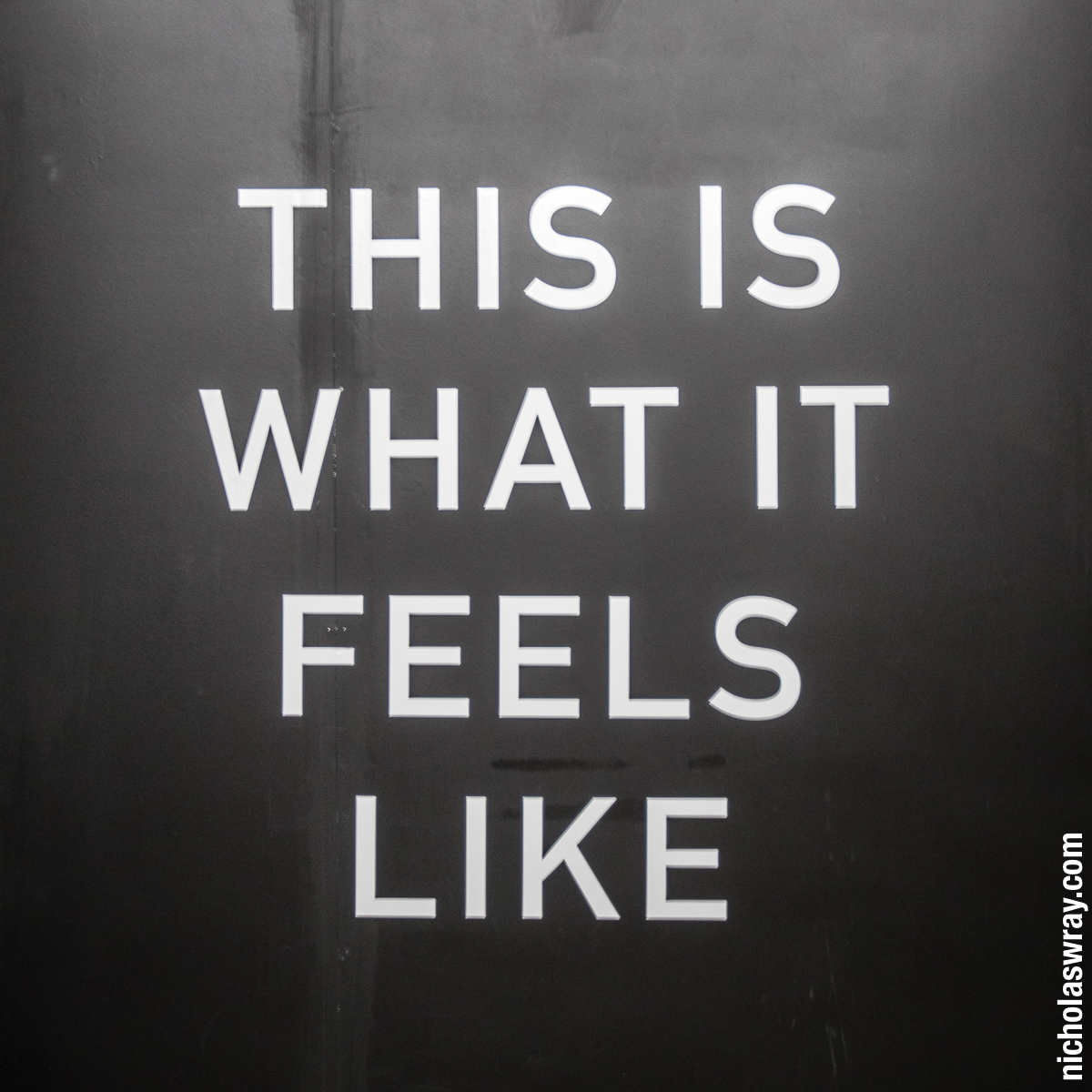
Photo by Nicholas Wray
Terra Lopez
“This Is What It Feels Like is intended to help shift our culture’s patriarchal views on how society treats women, and help create and sustain a discourse on the ways that we can simply be better to and for women. This auditory exhibit is intended to be an educational tool to help spark a dialogue amongst men of all ages as to how they can help create and be the change that our society needs in order to stop misogynistic patterns that have become embedded into our culture. There is a mirror directly in front of the patron where they are then able to self-reflect as they continue to listen to the hundreds of catcalls that were directly taken verbatim from women.”
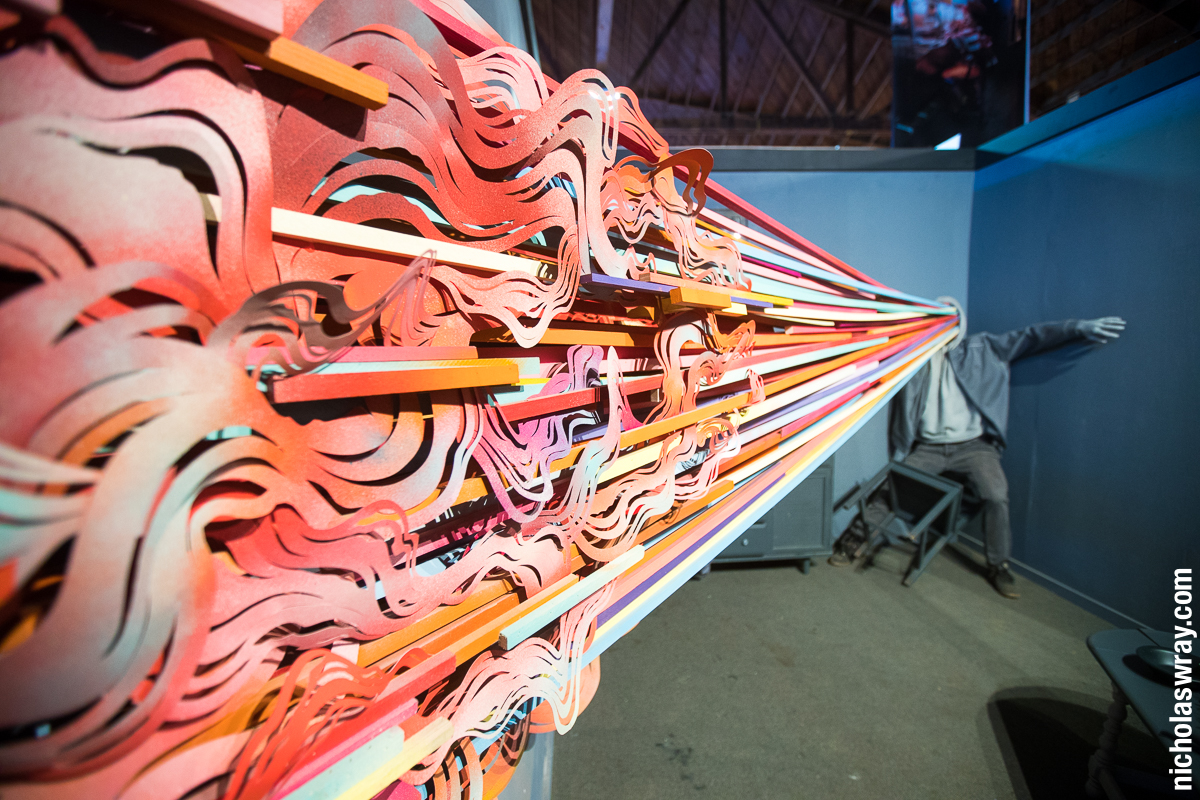
Photo by Nicholas Wray
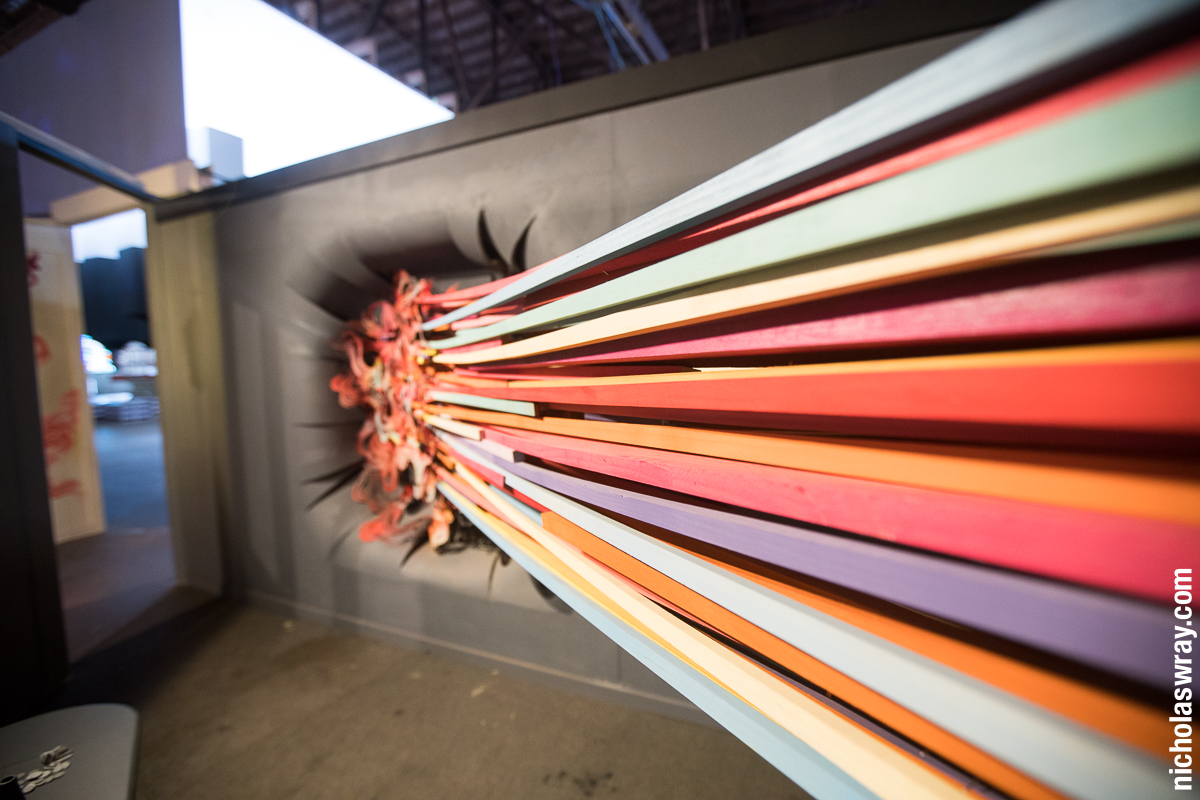
Photo by Nicholas Wray
Franceska Gamez
“I’ve been working with our site team on ArtStreet for about two months. Shaun Burner and I were going back and forth trying to decide whether or not we would even a have a room, because we didn’t think we would have the time or frankly, the space, but once we got our ideas rolling, we couldn’t turn back. Shaun and I began our room as soon as we got the walls up. We were definitely riffing off of the concept we had at Art Hotel, with the wooden man, mid-travel, a moment in time where you see him stuck between two worlds. The concept evolved more and more everyday after we dealt with logistical issues, building, meetings, etc.; we took time to sit in front of our room and dream away. We wanted to create a stale room, a monochromatic representation of everyday life in a box, a place you would call home, to contrast and highlight this magical explosion of color. Whatever this entity means to you, the color in your life, it is something to behold and really take the time to appreciate, and exercise if needed.”
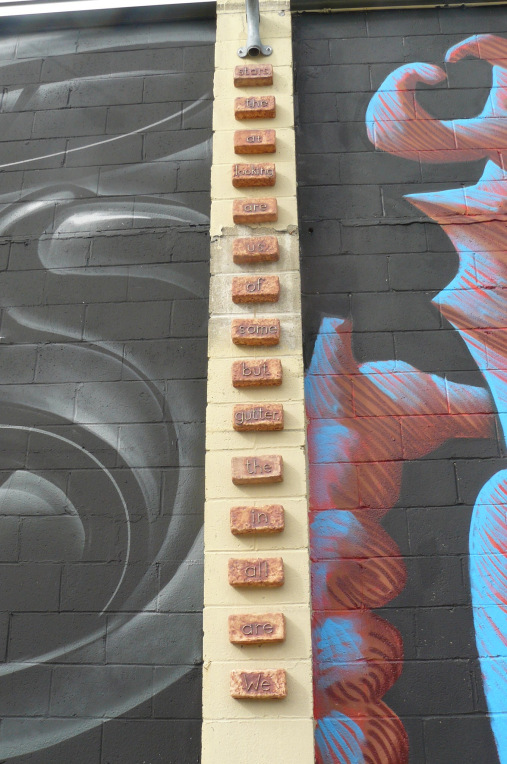
Photo by Aaron Cheesman
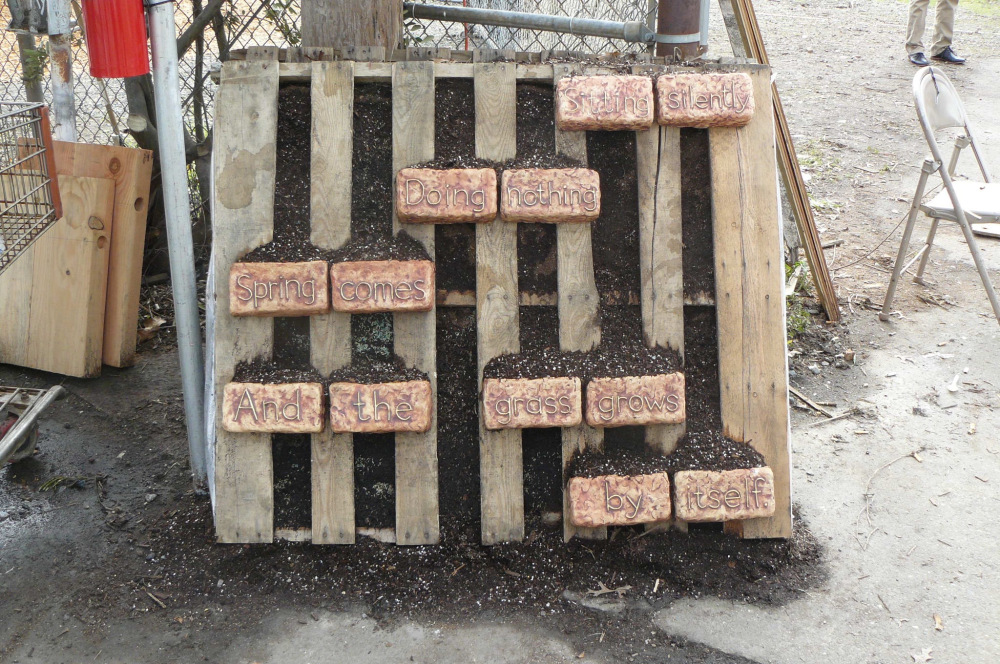
Photo by Aaron Cheesman
Ianna Frisby
“I began with an ordinary object: the brick. No other object better represents the sweeping societal changes that came with factory production, industrial revolution and the wealth that it brought. The brick literally became the building block of a new society—one that permitted the emergence not only of privileged idlers but also a commercial pageant for them to take in, one nonchalant step at a time. Compared to the more traditional agrarian landscape, this spectacle must have seemed a fantastic novelty. I repurposed the brick and transformed it from a banal structural element into a mode of expression that harkens the romance of the Gilded Age. I begin by forming wet clay around an actual brick. After the clay hardens, the brick was carefully removed leaving a hollow form, a brick negative, onto which words were hand-sculpted and gilded with luster. Just as structural bricks form a supporting wall, these messaging bricks are arrayed in such a way as to train the eye and form thoughts as the flâneur walks by and considers their place in that world at that moment. These brick negatives are lightweight and adhered to their backgrounds. The idea is that, rather than call attention to themselves, the bricks quietly reveal themselves only when passersby pause and look more closely. The messages presented by the bricks come from a collection of musings by celebrated flâneur artists and thinkers.”

Photo by Niki Kangas

Photo by Niki Kangas

Photo by Niki Kangas
Melissa Uroff Millner
“The Room of Mistakes is full of work that I’ve ‘messed up’ on; however, when it is all put together it comes together quite nicely. Trying to build my ArtStreet project, I was very, very pregnant, and things just kept going wrong. My kiddo came super late past her due date, which cut my creation time in half because while pregnant you cannot use photo chemicals. I was running out of time, the prints I created were not working out, screws fell out of the walls, negatives came late, everything that could go wrong did, so I ran with it. I ‘tied’ everything together with actual string and it turned out more powerful than I had imagined. I captured perfectly what it is like being a very new mom and a full-time artist; chaotic, messy, delirious, dreamy and still kind of fun.”
KiCo (Kitchen Collaborative)
Food is art, too. And chefs, artists. So in keeping with the spirit of ArtStreet, local chefs from all over Sacramento are volunteering their time and collaborating to offer different culinary delights each day at ArtStreet. Word to the wise: bring cash, so you can enjoy beer and wine served throughout the venue, make donations to the project and buy some awesome, inspired grub.

Photo courtesy of M5Arts
Some participating chefs include Ed Roehr of Magpie Cafe, Bryan Widener of Revolution Wines, Scott Ostrander of Park Winters and Ben Roberts of Pizza Supreme Being. Says Roehr, “The idea was to create a space where local cooks could collaborate and support the arts, and explore working together in a culinary environment. KiCo is an opportunity for cooks to work on a common project, without the competitive stress of vending and without the big corporate sponsorship some festivals bring with them.”
For more information, reservations or to purchase special event tickets, visit M5Arts.com. ArtStreet is located at 300 First Ave. in Sacramento, is free to the public and is open now through Feb. 25, Monday–Friday, 3–9 p.m. or later, and Saturday–Sunday 11 a.m.–9 p.m. or later.
****** CLICK HERE TO SEE MORE PHOTOS FROM ARTSTREET ******

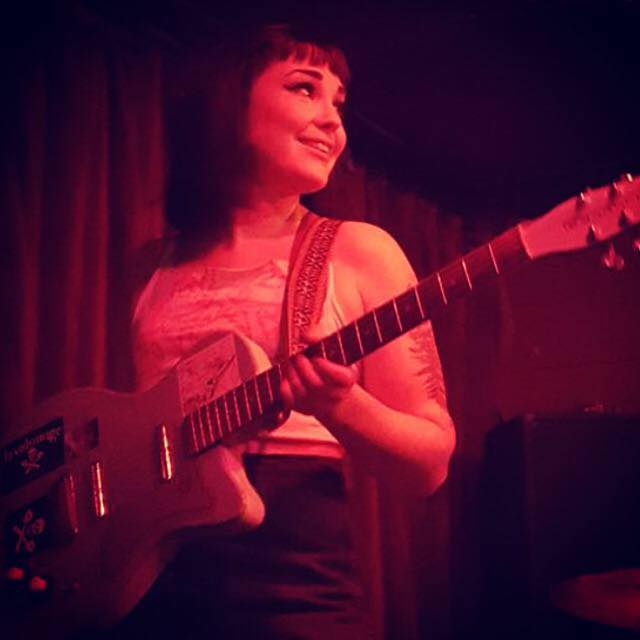
Comments